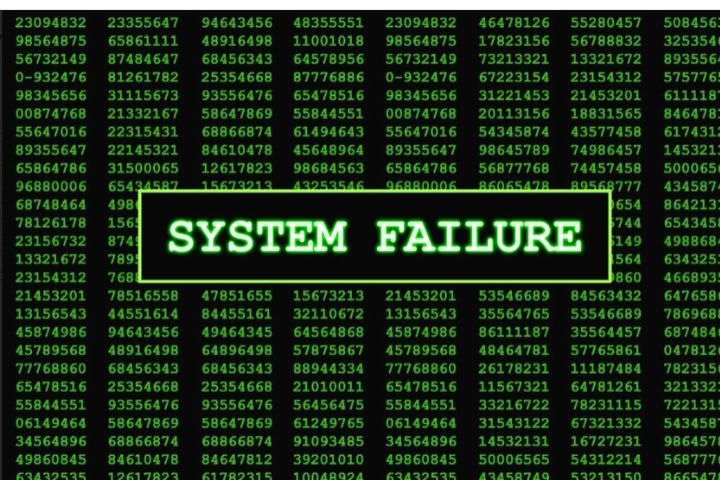5 Causes Of IT Failure And How To Prevent Them

The system and implementation of Information Technology (IT) in businesses and organizations have proved to be vastly useful in so many ways. Through the system, people are able to carry out their tasks and responsibilities in order to achieve an organization’s objectives. Improving efficiency and productivity using technology is indeed a key focus in any business and for this reason, proper implementation of IT is highly essential.
Table of Contents
What Causes IT Failure

Failures are unavoidable in any field or industry. However, that doesn’t mean that you won’t take the necessary steps to avoid or mitigate them. As you strive for efficiency, there should also be an equal desire and initiative to improve all processes and systems involving your organization.
But before you can take the necessary steps to mitigate such failures, you first need to identify what causes them. Only then can you be able to apply preventive measures and eventually improve the overall IT process.
Here are some of the most common causes of IT failure in organizations and what you can do to prevent them:
Ignoring Security Threats
Perhaps one of the most critical yet common types of IT failures is security breaches. As your business utilizes digital storage, computers, and the internet to work efficiently, there’s always an imminent presence of vulnerability. Threats in cybersecurity are becoming more and more prevalent. Knowing how to mitigate them is essential not just in growing your company, but more so, in making sure that it thrives and stays afloat.
IT failure could occur if you’re unable to see the signs of potential cybersecurity threats. Every day, there are thousands of cybercriminals and hackers who are just looking for an opportunity to attack. If you fail to recognize these signs, then you’re in for an IT failure in your system.
To make sure this doesn’t happen in your projects, you could consider getting the services of an efficient IT security company. These companies make sure that there’s enough cybersecurity solution in place to eliminate the risks surrounding your IT system.
Poor Communication
The importance of well-established communication among workers and employers can’t be emphasized enough. It’s the strong communication that makes a system work as it should, among other contributing factors. Whenever there’s a change in structure or workflow, if communication isn’t established successfully, it could lead to confusion and eventually, bad decisions.
It’s not only IT workers who should be communicating well in an IT project. The transmission and correspondence involve people from different departments and they should all work together in ensuring that the project will run as smoothly and as efficiently as planned.
To ensure this will be prevented in the future, you should have a well-structured communication strategy in place. In cases of new IT projects or system upgrades, there should be people who are tasked to communicate with everyone in the organization to make sure that all concerned personnel are given the necessary information. That way, protocols are safely carried out.
Insufficient Computer Memory
Computer crashing is a nightmare in any business or industry. It’s actually one of the most common reasons why IT processes fail. Though hard to believe, there are instances when companies forget to update their hardware and software. As daily transactions happen in the business, computer memory tends to overload and when it’s no longer sufficient, the whole system would crash and terribly fail.
Avoiding this IT failure is quite simple if you think about it. All it takes is regular monitoring of all your hardware and software systems. Having an effective strategy in place is key in making sure that your business won’t ever have to face a failure that’s a result of insufficient computer memory.
No matter how small your business may be, you still need to take the time to monitor all aspects of your IT department. Require your IT project leaders and managers to report anything that needs attention. Remind employees and staff to update their software when necessary. And best of all, invest in hardware that’s more efficient and updated.
Human Error
Just because IT systems are composed mainly of computers and other electronic devices doesn’t mean there’s no possibility of human errors being committed. Remember that while these devices work efficiently most of the time, they still require actual people to operate them.
In cases of data loss, it’s not always a failure on IT’s side, but could also be due to human error. Mistakes as simple as not saving files or information the right way and in the right folder could potentially result in a bigger IT issue. Or when someone in the organization forgets to save the file, deletes the wrong data, or forwards the wrong file to the wrong people and department. There are several errors that could happen and most of them are irreversible, making them more damaging to the project.
To prevent human errors, make sure everyone in the company is trained and skilled enough to handle responsibilities. They should be well aware of their responsibilities and what to do in case they did something wrong, no matter how simple the mistake may seem.
Disasters And Hazards
Just because IT operates digitally and electronically doesn’t mean it’s no longer vulnerable to physical threats. Your office or building is still exposed to different elements that could affect the efficiency of its facilities. Disasters like earthquakes, flooding, and fire can potentially threaten the competence of your IT system. Hazards are also present in the workplace in the form of data corruption or power loss.
While there’s no way to prevent or predict any of these disasters and hazards from occurring, you can do something to prepare your infrastructure for them. Backing up your system and files is extremely important to prevent data loss or corruption. Investing in backup power sources is also an effective strategy. Proper risk management is also equally important in the workplace.
Takeaways
IT efficiently helps an organization in carrying out its objectives and responsibilities. Knowing how helpful and crucial it is in your business, you should take the necessary measures to make sure that IT failures won’t find their way into your system. The first step in preventing these failures is to know what causes them.
Ignoring security threats, poor communication, disasters and hazards, human errors, and insufficient computer memory are some of the main causes of an IT letdown. You can take note of all the tips above so you can better manage and prevent them in the future.







